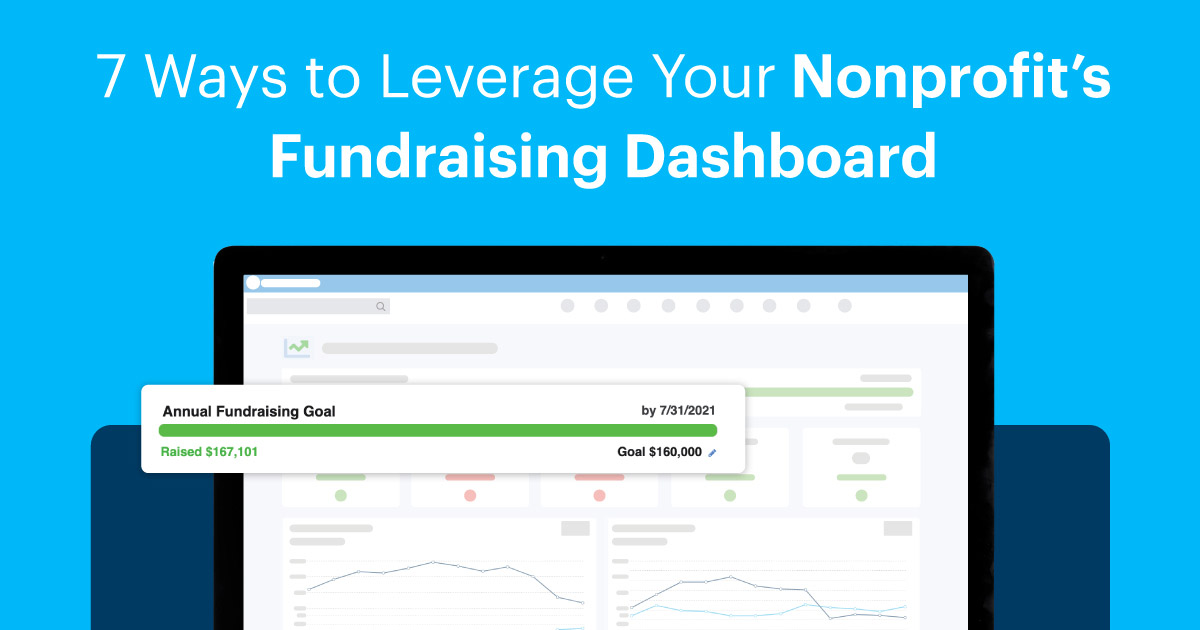
Although the experts say that a key to fundraising success is consistency, nonprofit professionals are all too familiar with the staffing challenges that make aligning around just one goal feel next to impossible. However, it pays to be on the same page – literally – and having a central hub like an organizational dashboard can work wonders in making sure the chaos is kept to a minimum.
That’s why it’s important to:
Using your Organizational Dashboard to Manage and Grow Your Nonprofit
With the arrival of DonorPerfect’s new organizational dashboard, we’re excited to share with you some ways you can take advantage of such resources, no matter what online fundraising software you use.
#1. Align your team, regardless of turnover
With a revolving door of staff and volunteers, nonprofits don’t necessarily have it as easy as for-profit organizations when it comes to collaboration – especially with the new emphasis on working from home. But at the end of the day, aligning your team around your mission’s goals is critical to accomplishing them. By utilizing a single organizational dashboard as a point of reference, your entire team can make pointed efforts in pushing the needle forward, knowing where the needle actually is at any given time.
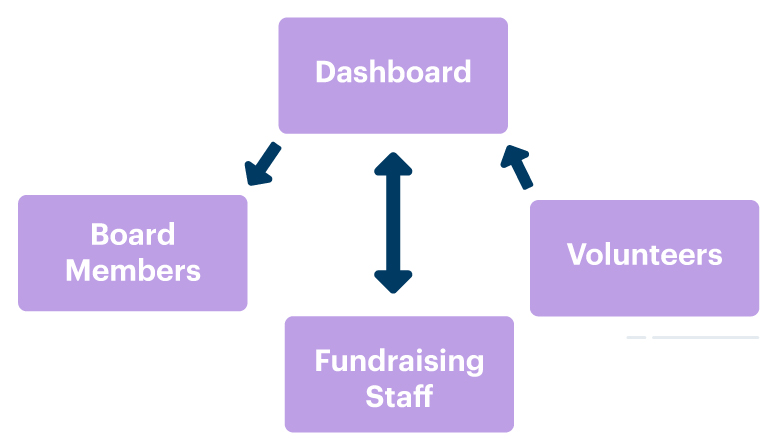
#2. Stay prepared with an answer for your board
It can be quite nerve-wracking when your nonprofit’s board asks for word on your latest progress, especially if you don’t have an immediate answer, and if it requires you to run a report in order to provide one. Your organizational dashboard alleviates the pressure by granting your staff and volunteers instant access – and subsequently, an instant answer – regarding your mission’s real-time key metrics. You can quickly and easily export your dashboard data into a format you choose to share with your board, too!
#3. Use your gift average to your advantage
Just as your staff appreciates having a point of reference to base their goals around, your donors find comfort in knowing what amount their peers give and what would be helpful to your mission. So, guide their giving by sharing your donors’ average gift amount. We see this strategy in political campaigns, like that of Bernie Sanders, who often shares in his appeals that his average gift is $27.
What happens next is psychology, and it’s pretty amazing: folks who would have otherwise given $10-20 dollars, for example, are more inclined to donate the specific amount asked of them, even if it means giving more, thanks to a bit of lighthearted peer pressure.
Inform your forms
Once you know your average gift amount, work backwards to determine what the amount covers. Then, add this detail to your donation forms (Ex: $50 – Most popular, covers one month of food for a family of four).
Inform your future
Another perk of knowing your average gift amount is setting attainable goals. Once you know the total needed to reach your goal, you’ll be able to calculate how many donors you’d need to target in order to achieve it. Just divide the total amount you want to raise by your average gift amount.
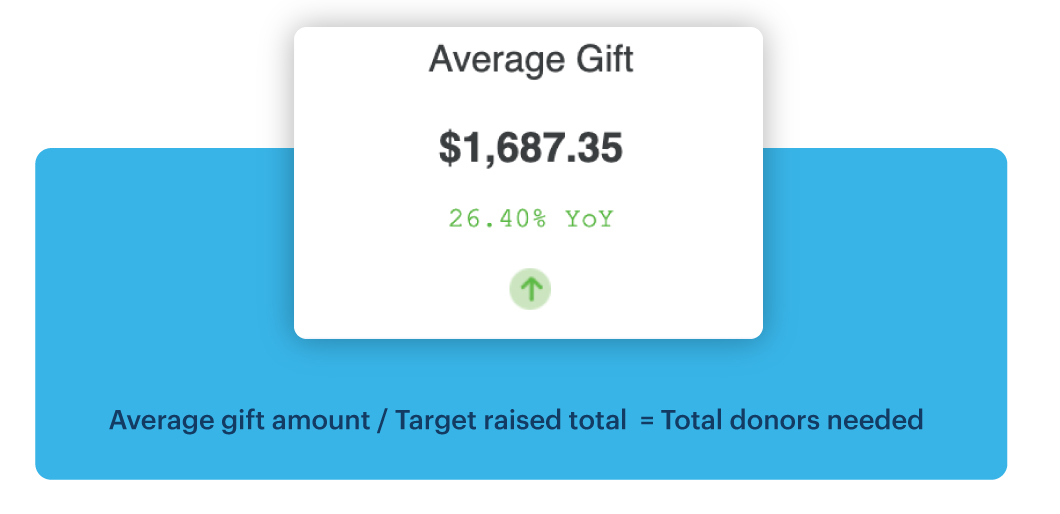
#4. Create a giving level program
The idea of leading your ask with your average gift amount can be off-putting to some fundraisers because they believe that larger donors will give less than they would have otherwise. A fair compromise is to incorporate your average donation amount into a giving level program. Knowing your average gift amount, you can develop perks for each giving level to incentivize making higher donations.
Here’s an example of what other nonprofit organizations have coined their giving levels:
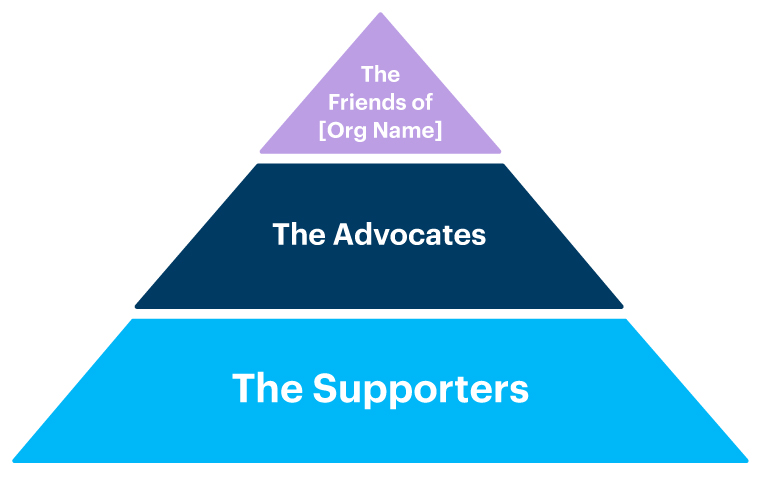
#5. Stay ahead of donor retention
Another way your dashboard can help your team plan ahead is by calculating the lifetime value of each of your donors. Donor lifetime value multiplies the average annual donor contribution amount by your average donor lifespan. This way, you can get a ballpark idea of how much an individual donor will give for the anticipated length of time your donors typically stick around.
#6. Know when to kick it into high gear
Just as the old adage tells us, “You can’t know where you’re going if you don’t know where you’ve been,” you simply can’t envision fundraising success without a glimpse at how you’ve been doing. A growth-in-giving metric on a shared dashboard grants all users access to the percentage of growth or decline in your fundraising total over a rolling 12-month period. Having this reference readily available means you’re more likely to check in on your progress more frequently and take actions to remedy a decrease sooner.
#7. Avoid a lapsed donor relapse
Like the growth-in-giving metric, having a summary of your total donors and donor retention rate available at a quick glance will prompt your team to act more quickly and perhaps catch lapsed donors sooner. In addition to having the information handy right from your dashboard, a scheduled report can provide a list of your lapsed donors at your preferred interval. Here’s how to schedule a report in DonorPerfect.
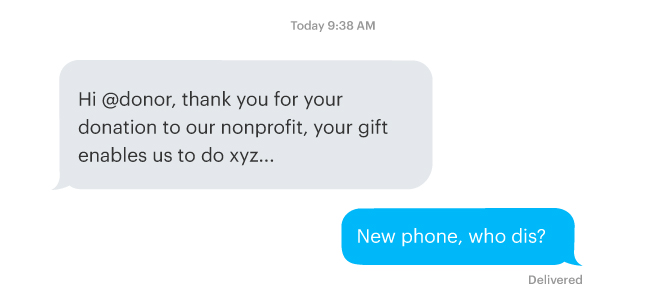
No matter how you decide to use your fundraising dashboard, you can rest assured that it will only help your efforts to get your team working more collaboratively and efficiently together – and without extra work. At least with DonorPerfect, your dashboard is already compiling this data or you.





